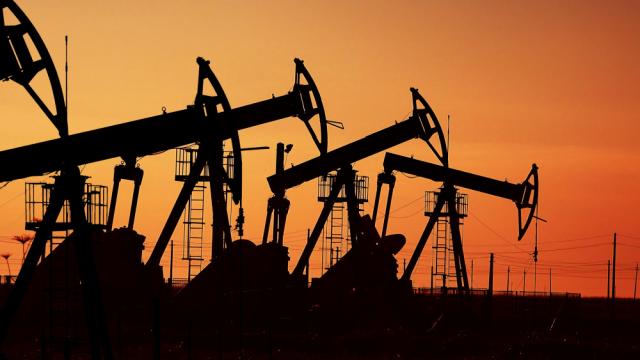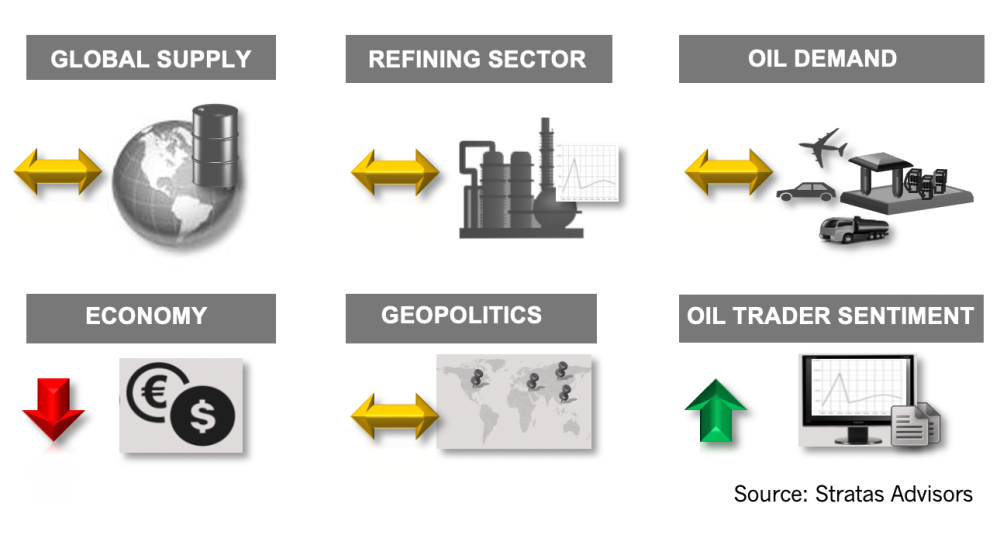
For the upcoming week, Stratas Advisors predicts oil prices will drift downward slightly following the OPEC+ agreement on Jan. 4 to stick with the group’s planned increase in oil output for February. (Source: Shutterstock.com)
[Editor’s note: This report is an excerpt from the Stratas Advisors weekly Short-Term Outlook service analysis, which covers a period of eight quarters and provides monthly forecasts for crude oil, natural gas, NGL, refined products, base petrochemicals and biofuels.]
After the rebound in prices during the week of Dec. 27, crude prices continued to increase last week. The price of Brent crude ended the week at $77.94 after closing the previous week at $75.59. The price of WTI ended the week at $75.45 after closing the previous week at $73.79. Crude prices were supported by a favorable inventory report from the U.S. Energy Information Administration (EIA). The report indicated that commercial crude inventories declined by 3.58 million barrels (Strategic Petroleum Reserve inventories in the U.S. decreased by 1.35 million barrels). Product inventories also decreased with gasoline inventories declining by 1.46 million barrels and diesel inventories declining by 1.73 million barrels.
The increase in crude oil prices has occurred despite the ongoing concerns about COVID-19 and the Omicron variant. Currently, COVID-19 cases from a global perspective are at all-time highs with the number of cases increasing by 68% during the last 14 days. The better news is that while the number of cases is rapidly rising, the number of deaths has declined by 12% during the last 14 days. While, Omicron was first identified in South Africa, Europe has been the region that has initially experienced significant increases in cases, and some European countries are still experiencing rising cases and deaths:
- Cases in France increased by 11% and deaths increased by 32%
- Cases in Italy increased by 194% and deaths increased by 44%
Cases in the U.K. are also increasing (by 128% during the last 14 days), but deaths decreased by 36% during the same period. Germany’s data are even more promising with cases decreasing by 47% and deaths decreasing by 38%. Furthermore, from the time cases started ramping up in Germany until reaching a peak and then falling was only a total of six weeks.
North America is also seeing an acceleration in COVID-19 cases. Cases in the U.S. increased by 153%, but hospitalizations only increased by 14%, while deaths declined by 7%. As such, while the number of cases is 33% higher than the previous peak that occurred on Jan. 11, 2021, hospitalizations are less than 60% of the previous peak, and deaths less than 40% of the previous peak. Given the experience of Germany, and the fact that Omicron spreads faster than the previous variants, we are expecting that the number of COVID-19 cases in U.S. will peak in mid-January with the epicenter of cases shifting from the Northeast to the Southeast and Midwest and then westward. As such, the migration will be from a densely populated region to regions with lower population density.
While the impact of Omicron has most affected North America and Europe, cases are starting to uptick in Latin America and Africa, but remain relatively low, while cases in Asia are still trending downward. One potential risk is that many countries in Asia (including China, Australia, and New Zealand) have applied more aggressive policies to tamp down any increase in COVID-19 cases. Because of the high level of transmissibility associated with Omicron, it is possible that these Asian countries will not be as successful as in the past in keeping the cases low without the implementation of severe economic and social lockdowns, which would have significant impact on oil demand.
While COVID-19 and Omicron is getting significant media attention, we still think the response to Omicron, for the most part, will be muted in terms of limiting economic activity. The rationale is that focus will be on ramping up booster shots and more moderate mitigation efforts—as long as the rate of hospitalizations does not spike out of control—which we think is less likely because of the extend of vaccinations and that Omicron seem to result in milder cases. Also, because of the widespread nature of Omicron and high level of transmissibility, substantially more people will gain some immunity from COVID-19, and those people, along with the vaccinated people, will help accelerate the shift of COVID-19 from a pandemic to being endemic in nature, in which COVID-19 will still exist, but that there will be enough people with immune protection from vaccination and from natural infection, so there will be less transmission and much reduced level of hospitalizations and deaths.
For the upcoming week, we are expecting that oil prices will stabilize prior to the OPEC+ meeting that is scheduled on Jan. 4. During the meeting, we are also expecting that members of OPEC+ will agree to maintain the monthly increases of 400,000 bbl/d in February because of the current level of prices and the forecasted supply/demand fundamentals. Even with the projected increases in supply (OPEC and non-OPEC) demand is expected to continue to outpace supply during first-quarter 2022. After the meeting, we are expecting oil prices to drift downward slightly through the rest of the week.

About the Author:
John E. Paise, president of Stratas Advisors, is responsible for managing the research and consulting business worldwide. Prior to joining Stratas Advisors, Paisie was a partner with PFC Energy, a strategic consultancy based in Washington, D.C., where he led a global practice focused on helping clients (including IOCs, NOC, independent oil companies and governments) to understand the future market environment and competitive landscape, set an appropriate strategic direction and implement strategic initiatives. He worked more than eight years with IBM Consulting (formerly PriceWaterhouseCoopers, PwC Consulting) as an associate partner in the strategic change practice focused on the energy sector while residing in Houston, Singapore, Beijing and London.
Recommended Reading
For Sale, Again: Oily Northern Midland’s HighPeak Energy
2024-03-08 - The E&P is looking to hitch a ride on heated, renewed Permian Basin M&A.
E&P Highlights: Feb. 26, 2024
2024-02-26 - Here’s a roundup of the latest E&P headlines, including interest in some projects changing hands and new contract awards.
Gibson, SOGDC to Develop Oil, Gas Facilities at Industrial Park in Malaysia
2024-02-14 - Sabah Oil & Gas Development Corp. says its collaboration with Gibson Shipbrokers will unlock energy availability for domestic and international markets.
TotalEnergies Acquires Eagle Ford Interest, Ups Texas NatGas Production
2024-04-08 - TotalEnergies’ 20% interest in the Eagle Ford’s Dorado Field will increase its natural gas production in Texas by 50 MMcf/d in 2024.
Second Light Oil Discovery in Mopane-1X Well
2024-01-26 - Galp Energia's Avo-2 target in the Mopane-1X well offshore Namibia delivers second significant column of light oil.





